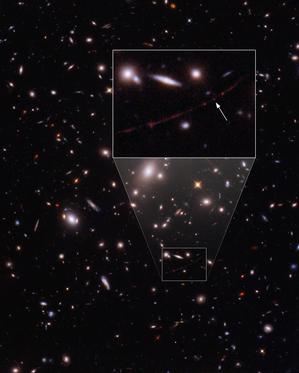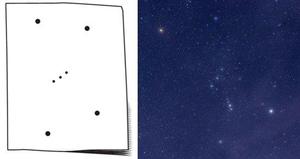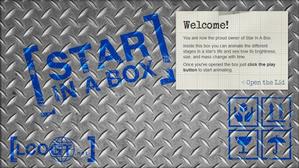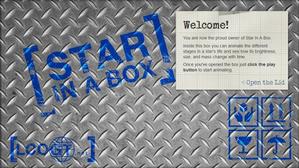Glossary term: Étoile
Description: Une étoile est une boule de plasma - des noyaux atomiques séparés de leurs électrons - maintenue par sa propre gravité et empêchée de s'effondrer par la pression interne résultant des processus de fusion nucléaire dans les régions centrales de l'étoile. Les astronomes, abusant légèrement de la terminologie physique, utilisent couramment les termes "gaz" et "plasma" de manière interchangeable, et se réfèrent donc également aux étoiles comme à des boules de gaz. Dans l'atmosphère d'une étoile, le plasma peut n'être que partiellement ionisé et (en fonction de la température de l'étoile) contenir quelques atomes.
L'étoile la plus proche de la Terre est le Soleil.
Dans un sens plus général, le mot "étoile" englobe les protoétoiles où la fusion nucléaire n'a pas encore commencé, ainsi que les vestiges stellaires tels que les étoiles à neutrons ou les naines blanches, qui sont deux possibilités (en fonction de la masse) de transformation des étoiles une fois qu'elles ont épuisé le combustible nécessaire à leur fusion nucléaire. Ces restes stellaires ne sont pas de simples boules de plasma : une naine blanche peut se cristalliser en un type de solide inhabituel après avoir été refroidie pendant des milliards d'années, et les étoiles à neutrons peuvent être comparées à de gigantesques noyaux atomiques.
Dans le cosmos, les étoiles se trouvent généralement à l'intérieur des galaxies, chaque étoile étant généralement accompagnée d'une ou plusieurs planètes. L'étude de la formation et de l'évolution des étoiles est un sous-domaine important de l'astrophysique.
Related Terms:
See this term in other languages
Term and definition status: The original definition of this term in English have been approved by a research astronomer and a teacher The translation of this term and its definition is still awaiting approval
The OAE Multilingual Glossary is a project of the IAU Office of Astronomy for Education (OAE) in collaboration with the IAU Office of Astronomy Outreach (OAO). The terms and definitions were chosen, written and reviewed by a collective effort from the OAE, the OAE Centers and Nodes, the OAE National Astronomy Education Coordinators (NAECs) and other volunteers. You can find a full list of credits here. All glossary terms and their definitions are released under a Creative Commons CC BY-4.0 license and should be credited to "IAU OAE".
If you notice a factual or translation error in this glossary term or definition then please get in touch.
Related Media
A gravitational lens magnifies one of the first stars
Credit: NASA, ESA, B. Welch (JHU), D. Coe (STScI), A. Pagan (STScI) credit link
License: CC-BY-4.0 Creative Commons Attribution 4.0 International (CC BY 4.0) icons
Watchtower and Paddy Fields Under the Starry Sky
Credit: Likai Lin/IAU OAE
License: CC-BY-4.0 Creative Commons Attribution 4.0 International (CC BY 4.0) icons
Related Activities
What is a Constellation?
astroEDU educational activity (links to astroEDU website) Description: Investigate three dimensional objects and perspective using constellations
License: CC-BY-4.0 Creative Commons Attribution 4.0 International (CC BY 4.0) icons
Tags:
Hands-on
Age Ranges:
6-8
, 8-10
Education Level:
Primary
Areas of Learning:
Modelling
, Social Research
Costs:
Medium Cost
Duration:
1 hour 30 mins
Group Size:
Group
Skills:
Analysing and interpreting data
, Asking questions
, Constructing explanations
, Developing and using models
Star in a Box: Advanced
astroEDU educational activity (links to astroEDU website) Description: Explore the life-cycle of stars with Star in a Box activity.
License: CC-BY-4.0 Creative Commons Attribution 4.0 International (CC BY 4.0) icons
Tags:
Hands-on
, Interactive
, Software
Age Ranges:
10-12
, 12-14
, 14-16
, 16-19
Education Level:
Middle School
Areas of Learning:
Technology-based
Costs:
Low Cost
Group Size:
Group
Skills:
Communicating information
, Constructing explanations
Star in a Box: High School
astroEDU educational activity (links to astroEDU website) Description: Explore the life-cycle of stars with Star in a Box activity.
License: CC-BY-4.0 Creative Commons Attribution 4.0 International (CC BY 4.0) icons
Tags:
Hands-on
, Interactive
, Software
Age Ranges:
10-12
, 12-14
, 14-16
, 16-19
Education Level:
Middle School
Areas of Learning:
Technology-based
Costs:
Low Cost
Group Size:
Group
Skills:
Communicating information
, Constructing explanations
Star Hats
astroEDU educational activity (links to astroEDU website) Description: Make your star hat, learning about the stars
License: CC-BY-4.0 Creative Commons Attribution 4.0 International (CC BY 4.0) icons
Tags:
Art
, Creativity
, Hands-on
Age Ranges:
4-6
Education Level:
Pre-school
Areas of Learning:
Fine Art focussed
, Interactive Lecture
Costs:
Low Cost
Duration:
30 mins
Group Size:
Individual
Skills:
Asking questions
, Communicating information
How Light Pollution Affects the Stars: Magnitude Readers
astroEDU educational activity (links to astroEDU website) Description: Build a Magnitude Reader to explore the magnitude of stars.
License: CC-BY-4.0 Creative Commons Attribution 4.0 International (CC BY 4.0) icons
Tags:
Hands-on
, Dark skies
, ecology
Age Ranges:
10-12
, 12-14
, 14-16
, 16-19
Education Level:
Middle School
Areas of Learning:
Modelling
, Observation based
Costs:
Medium Cost
Duration:
1 hour
Group Size:
Group
Skills:
Asking questions
, Planning and carrying out investigations














